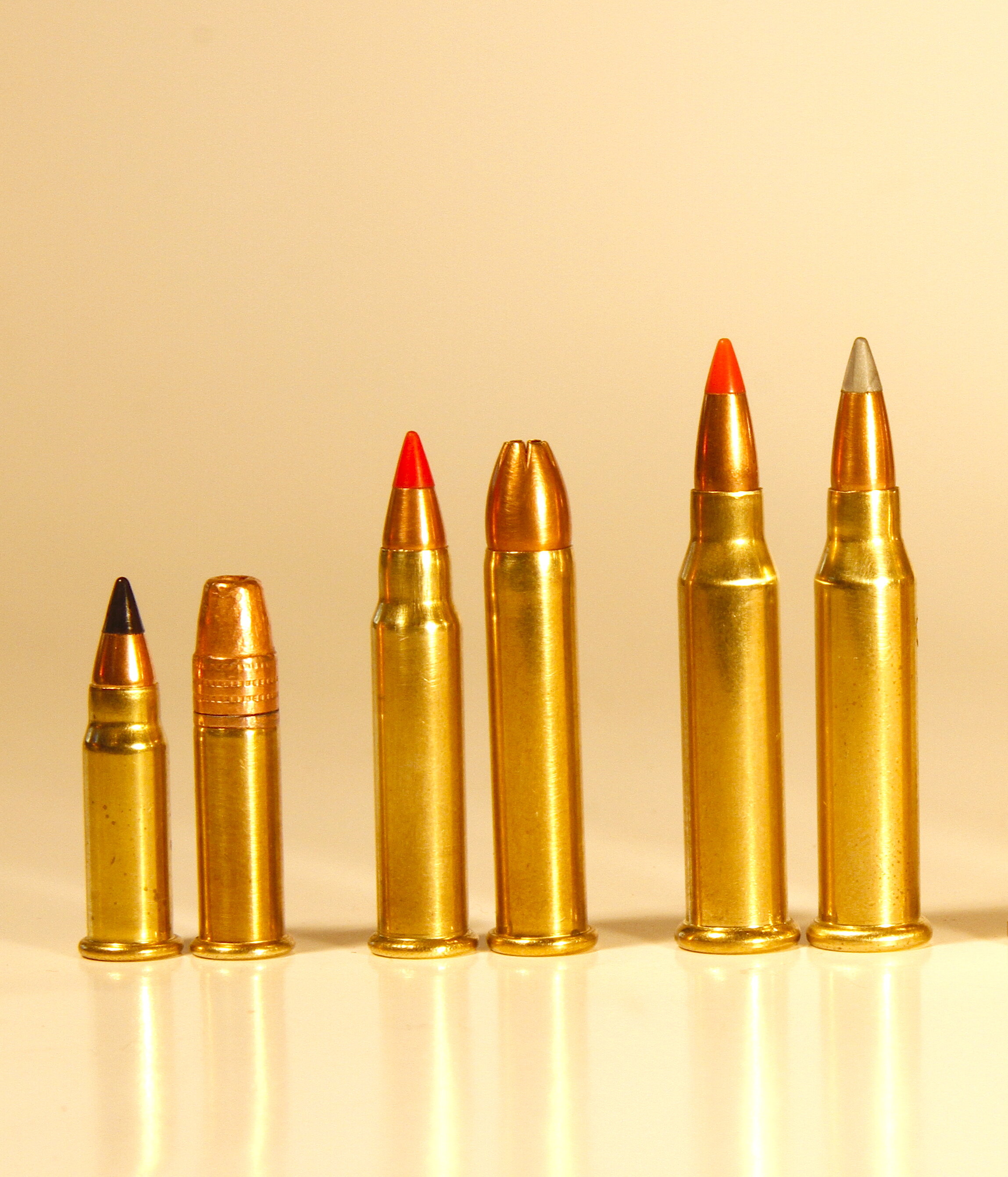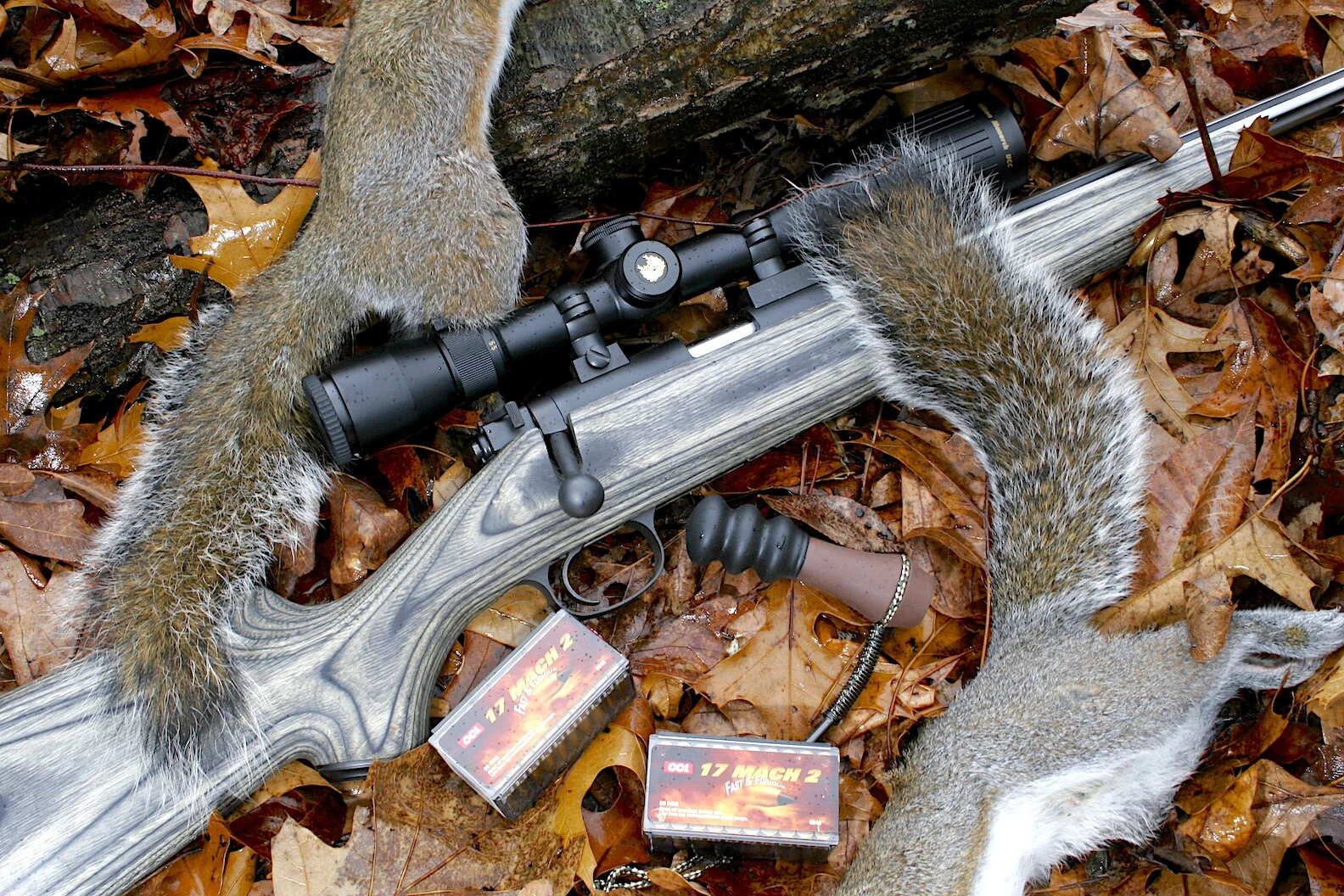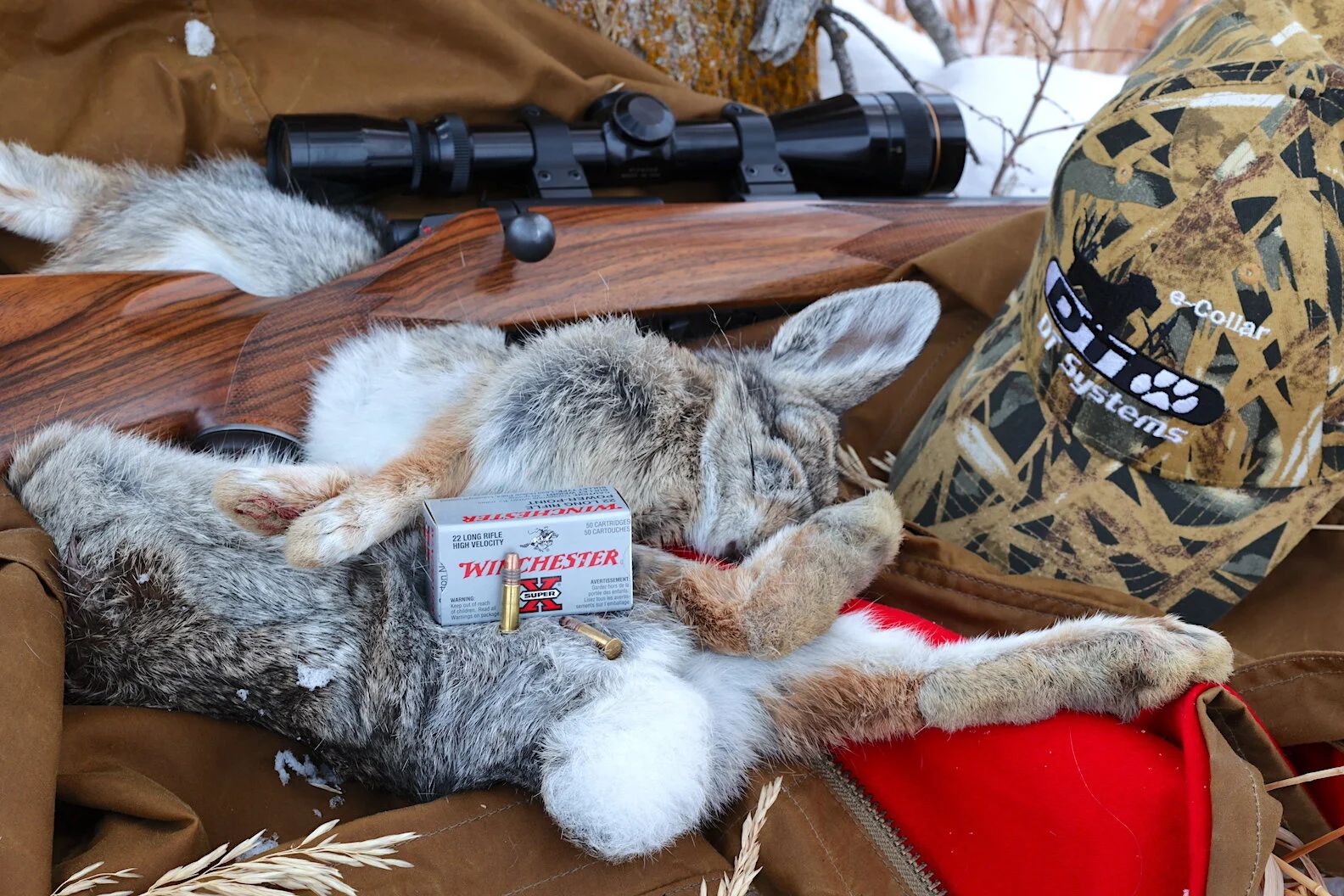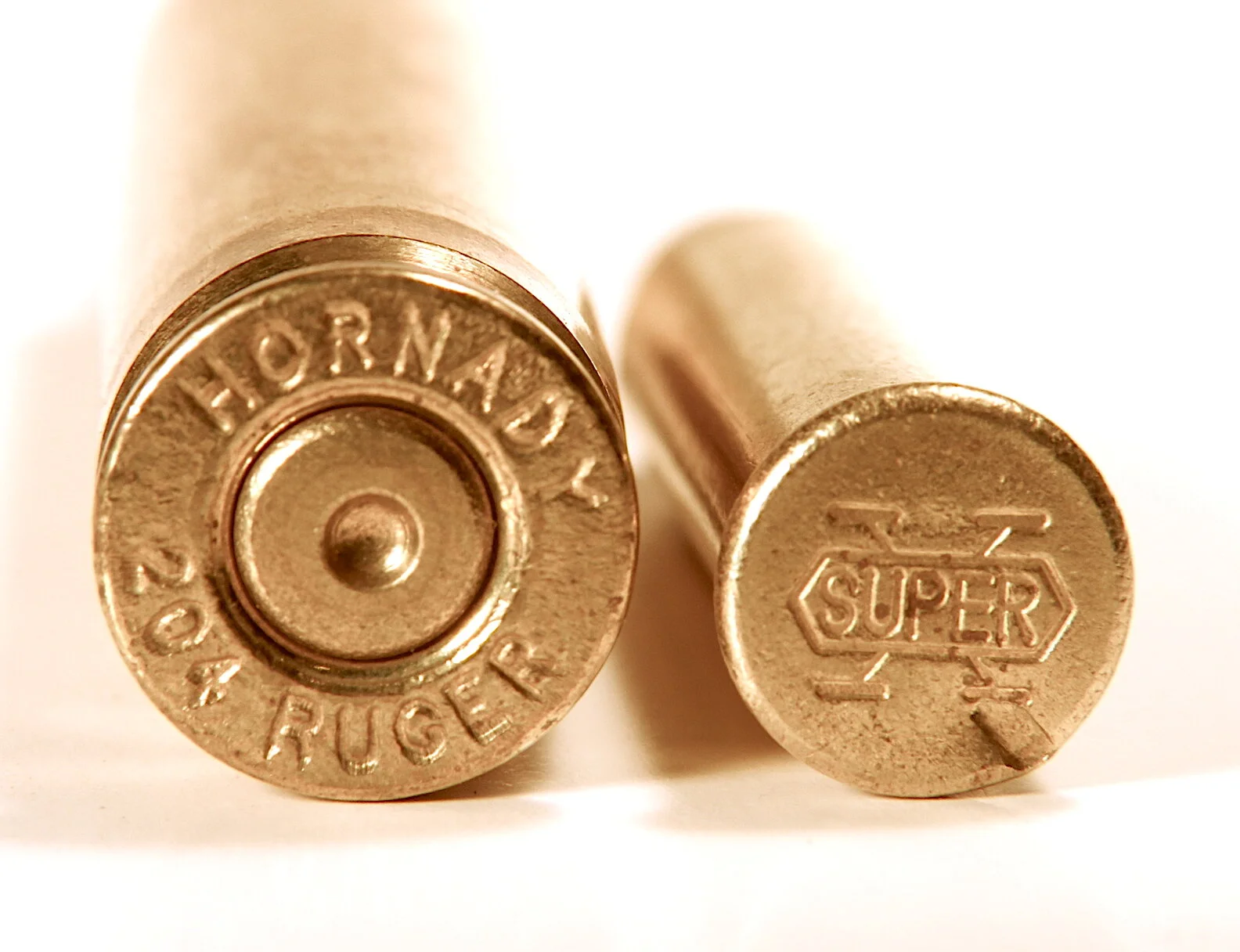World’s Smallest Rifle Cartridge (and friends)
17 Mach 2 & 22 Long Rifle. 17 HMR & 22 Win Mag. 17 WSM in 20-gr. and 25-gr.
Let’s say you’ve had enough of the velocity and power race. Enough of heavy rifles and heavier recoil. Enough of extreme range artillery. Let’s say you’d like to discover the world’s smallest rifle cartridge instead. We can help with that.
It’s the 17 Mach 2.
What? Never heard of it? Well open your ears and eyes because here’s your chance to discover the world’s smallest (by combination of caliber and case size.) It’s also arguably the best small game cartridge ever.
Kimber chambered a find bolt action fore the 17 Mach 2 once. I don’t believe they do anymore. Wish I’d never sent this one back.
The 17 Mach 2 is, as its title suggests, a 17-caliber. It shoots bullets .172” in diameter. The case is a CCI 22 Stinger case necked down to hold the .172 bullet. About the same time it came to market, Aguilla launched its 17 Aguilla based on the standard 22 Long Rifle case length, so it was for a time the smallest commercial cartridge, but it’s no longer made, from what I’ve been able to uncover. The Aguilla reportedly pushed a 17-grain bullet 1,850 fps. The Mach 2 takes it to 2,100 fps, which is pretty close to twice the speed of sound, which is why it was given the racy sounding Mach 2 handle.
Hornady was the creative force behind the Mach 2 following its wildly successful 17 HMR release in 2002. But by the Mach 2’s release in 2004, most rimfire hungry shooters had already bought the HMR, so found little need for a shorter 17 that went 400 fps slower. Shooter interest quickly died and so did the cartridge. Ammo companies stopped loading it. But Savage, I’ve heard, never stopped making at least a few rifles to shoot it. I don’t think T/C did either. You could get barrels for the Contender handguns and rifles, too.
Somewhere along the line shooter interest climbed and suddenly the 17 Mach 2 is a hot — or at least relatively warm — property. You might want to consider it. Here’s why:
The 22 Long Rifle is the old standard for head-shooting small game, but the 17 Mach 2 might be a safer option thanks to its frangible bullets.
Because its bullet is so light and frangible, it fragments easily on contact with soil, pebbles, small limbs. This suggests little or no recoil. Unlike 40-grain 22 rimfire slugs that go whining off after skipping off the ground, the little 17 just sort of disappears. Call this the safety factor.
Secondly, at 2,100 fps the little bullets scribe a remarkably flat trajectory, extending maximum point blank range to 120 yards of so on a two-inch diameter target. That’s a fox squirrel’s head, easily a cottontail’s head. I don’t know about you, but when I’m in pursuit of squirrels and rabbits for stew, I take head shots only. Even at its reduced velocity at 125 yards the 17 Mach 2’s bullet thoroughly terminates head-shot small game.
17 Mach 2 Ballistics
Not to belabor the point, but what this means is you should be able to zero your 17 Mach 2 to hit point-of-aim at 90 yards. Your bullet’s peak trajectory would put it 1-inch high at about 70 yards, 1-inch low at about 120 yards. Aim for the center of your target and you should score a head shot clear out to 120 yards. At 120 yards the bullet will be packing only about 78 f-p energy, but that is more than enough to thoroughly scramble your prey’s central nervous system.
Resist head shots like this with any high velocity rimfire, especially the 17 Mach 2. Extensive meat damage is likely.
Be aware that closer shots are explosive enough to extend damage from the head into the edible front quarters. Head-on shots are not recommended. Stick with broadside shots and you’ll retrieve all edible meat.
By this juncture many of you may be waving the 22 Short as contender for the smallest cartridge title. In terms of power you’re on the right track. Most Shorts throw 29-grain bullets 700 fps to no faster than about 1,160 fps to generate at most 85 f-p energy at the muzzle. This rapidly dwindles due to the relatively low B.C. (.080) round nose bullet. By 100 yards energy is down to 25 f-p, but that’s still enough to penetrate and kill, so never treat the 22 Short like a toy. This was originally a self defense cartridge.
22 Short Trajectory Table
But even those who vote for the 22 Short as the world’s smallest commercial cartridge might have their bets called by others who know the CB Cap. CCI may still load this oldie. It spits a 29-grain bullet about 700 to 800 fps from a Short case. Originally it fired the 29-grain short bullet from the even shorter BB cap, which takes us to another contender and probably the Puny Cartridge King of all time, the BB Cap. This was the original self-contained brass cartridge cobbled together in 1845 by Frenchman Flobert. He essentially topped a muzzleloader primer (cap) with a round ball (BB) and propelled it with the primer mix only. RWS still loads a variation of BB Cap, sticking a conical 18-grain bullet atop a case just .420-inch long.
Wildcatters might point to some 14-caliber and even 11-caliber cartridges that have been concocted. Yes, those are tiny and battling for the smallest caliber size, but they were never, to my knowledge, offered as factory loaded ammunition in factory produced rifles. I hunted jackrabbits with a 14x221 Fireball once and was underwhelmed. I can’t imagine handloading those slivers of bullets.
The rimfire challenge. The rim must be thin enough to crush, yet tough enough to not blow out and release hot gases.
An enlightening extension of this topic is the world’s most powerful rimfire cartridge. As you probably know, rimfires cannot reach the muzzle velocities of centerfires because the case rims must be crushed by the firing pin. Generate too much pressure with too much powder and you risk blowing open those thin, crushed rims where the primer was lodged. The 22 Long Rifle is SAAMI rated for MAP (Maximum Average Chamber Pressure) 24,000 psi, the 22 Win Mag for 24,000 psi, the 17 Mach 2 for 24,000 psi, the 17 HMR for 26,000 psi, and the 17 Winchester Suer Magnum for 33,000 psi. In contrast, the 270 Win. MAP is 65,000 psi! This data alone should suggest relative velocity and power potential of these rimfires. Add increased powder volume in the larger case and the clear champ is the 17 WSM. It drives a 20-grain bullet 3,000 fps to generate 400 f-p muzzle energy. It carries 188 f-p at 200 yards. That’s more than the 22 Win. Mag. packs at 100 yards.
17 Winchester Super Magnum Ballistics
This basic trajectory chart clearly shows relative performance of all our popular 22- and 17-caliber rimfires.
It interesting to note that during the 1800s we had many rimfires, some as large as 50-caliber pushing 500-grain bullets as fast as 1,100 fps with blackpowder. The most successful of the lot, aside from the 22s, was the 44 Henry Flat chambered in the original Henry lever-action rifle of 1860s. It drove a 200-grain bullet about 1,000 fps. It was superseded by the centerfire version of 1873 known as the 44-40 Winchester. From that point on centerfires took center stage.
Today ammo makers are loading the following rimfires, some as special, limited editions released from time to time. Not all are currently chambered in factory rifles, but that can change at any time. With Aguilla making 5mm Remington Magnum ammo again, it wouldn’t surprise me if someone again chambered a rifle for it.
BUY NOW
22 BB Cap
22 CB Cap
22 Short
22 Long
22 Long Rifle (at various power levels from subsonic to hyper velocity)
22 Winchester Magnum Rimfire
5mm Remington Magnum
17 Mach 2
17 Hornady Magnum Rimfire
17 Winchester Super Magnum
Of all these I find the old 22 Long Rifle most versatile. It’s ubiquitous and low-cost. Recoil and muzzle blast are minimal. Range is more than plenty for small game hunting. Every style of rifle is chambered for it. You can carry hundreds of rounds in a small space. Outstanding for practice. Perfect for training and education. Capable of taking even the largest game during emergencies.
But I’ll take the 17 Mach 2 as the perfect squirrel and cottontail meat getter.



















